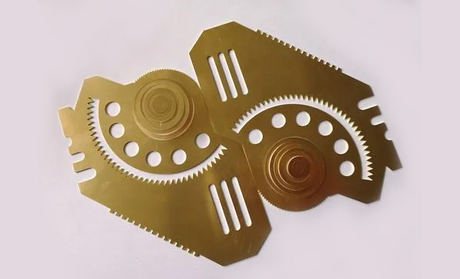Laser cutting machines are widely used in various industries due to their high precision, high efficiency and flexibility. The following is a detailed introduction to some major industries and their applications:
1. Machinery manufacturing industry
In the field of machinery manufacturing, laser cutting machines are mainly used for cutting metal parts. Its applications include:
Parts manufacturing: used to generate parts with complex shapes to meet the requirements of high precision and complexity.
Tool manufacturing: cutting and forming various cutting tools.
Machining: in machine tools, automobiles, aviation and other fields, laser cutting machines can efficiently cut various metal sheets and profiles.
2. Automobile industry
The application of laser cutting machines in the automobile industry mainly includes:
Body structure parts: high-precision cutting of the body shell to ensure assembly quality.
Parts cutting: processing various automotive accessories, such as exhaust pipes, chassis components, etc.
Personalized design: providing customized services for automobile manufacturers to meet customers' personalized needs.
3. Aerospace industry
In the aerospace industry, laser cutting machines are used for:
Complex component manufacturing: cutting high-strength materials (such as titanium alloys and aluminum alloys) to manufacture aircraft parts and spacecraft structures.
Lightweight design: Helps achieve optimized design and highly integrated components in industry.
4. Electronic and electrical industry
The application of laser cutting machines in the manufacture of electronic and electrical equipment includes:
Circuit board manufacturing: Used for cutting and engraving PCB (printed circuit board) to achieve high precision requirements.
Casing and accessories: Cutting the casing, panel, etc. of electronic equipment to enhance the appearance and function of the product.
5. Advertising industry
In the advertising industry, the application of laser cutting machines is mainly reflected in:
Logo and signboard production: Efficient cutting of various materials (such as acrylic, wood, metal, etc.) to make logos, light boxes and billboards.
Engraving and personalized customization: Fine engraving of various non-metallic materials to meet personalized needs.
6. Construction industry
The uses of laser cutting machines in the construction industry include:
Metal component processing: Cutting steel bars, steel plates and other metal components for structural engineering and building decoration.
Decorative materials: Used to cut and engrave various decorative panels and facade materials to enhance the beauty of the building.
7. Furniture and decoration industry
The application of laser cutting machines in furniture and interior decoration includes:
Furniture design: cutting wood, plastic and metal to make furniture components and accessories.
Artwork customization: providing cutting services for artists and designers to create unique art installations and decorations.
8. Medical Industry
In the medical device industry, laser cutting machines are used for:
Medical device manufacturing: cutting parts of various medical devices and instruments to ensure high hygiene standards and precision.
Implant processing: high-precision cutting and molding of implants and other medical applications.
9. Textile and leather industry
The application of laser cutting machines in the textile and leather industry is mainly reflected in:
Textile cutting: high-precision cutting of various fabrics for clothing, accessories and decoration manufacturing.
Leather product processing: fine cutting and engraving of leather materials to manufacture products such as shoes and handbags.
Laser cutting machines have become an indispensable and important equipment in modern industry due to their high efficiency, precision and flexibility. Different industries use laser cutting technology to innovate production according to their own needs, improve product quality and production efficiency, and promote the development of various industries. Click here to contact Suntop Laser today for a free laser cutting test.
























































